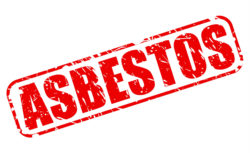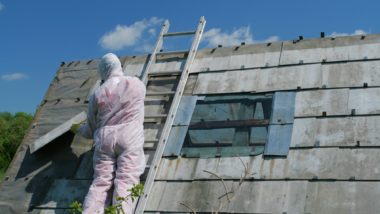Top Class Actions’s website and social media posts use affiliate links. If you make a purchase using such links, we may receive a commission, but it will not result in any additional charges to you. Please review our Affiliate Link Disclosure for more information.

Lung cancer is the most common form of cancer to afflict Americans with close to 200,000 new cases diagnosed every year. According to the Centers for Disease Control and Prevention, lung cancer kills the most Americans out of all other types of cancer; annually, over 4,800 deaths are attributed to lung cancer.
There are two types of lung cancer: non-small cell lung cancer and small cell lung cancer. Non-small cell lung cancer accounts for around 85 percent of lung cancers and includes adenocarcinoma, the most common form of lung cancer. Small cell lung cancer accounts for the remaining 15 percent.
Small cell cancer is more frequently linked to smoking and will grow and spread more rapidly than non-small cell lung cancer. However, small cell lung cancer is more responsive to chemotherapy than non-small cell lung cancer.
Lung Cancer Causes
The American Lung Association lists common lung cancer causes: smoking, radon, hazardous chemicals, particle pollution, and family history. Under the hazardous chemicals cause, the association lists exposure to asbestos. Although the risk is not at the top of the list, the risk for lung cancer due to asbestos exposure cannot be overlooked.
Lung cancer often has many contributing factors, rather than one source which can be pinpointed as the only cause. A study published in the American Journal of Clinical Pathology found that nearly all individuals diagnosed with asbestos lung cancer also were exposed to tobacco smoke. So, while asbestos exposure or tobacco smoke exposure each carry their own risks for lung cancer, they often both play a role in the development of asbestos lung cancer.
Overview of Asbestos
Asbestos is a naturally occurring mineral which was commonly used in industrial materials due to its innate resistance to fire, electricity, and chemical corrosion. However, studies revealed that asbestos poses serious health risks including the risk for cancer.
When asbestos-containing products are cut, moved, or otherwise disturbed, they release small particles which cannot be seen or tasted. However, these particles can be inhaled and swallowed. Once in the body, asbestos particles are thought to cause inflammation on a cellular level. Cellular inflammation can lead to mutations of cells – including the development of cancer.
Occupations who may have been at risk for asbestos exposure include U.S. Navy, U.S. Military, shipyard workers, auto mechanics, paper mill workers, construction workers, textile workers, insulation installers, sheet metal workers, roofers, toll collectors, tilers, linotype technicians, plumbers, and more.
Most people do not consider asbestos exposure when thinking about lung cancer causes because asbestos-induced lung cancer is often not diagnosed until 20 to 50 years after exposure.
Although this long latency period may make it difficult to identify if asbestos exposure caused lung cancer, companies may still be held liable for failing to protect workers and consumers from the hazards of asbestos. Legal professionals may be able to help individuals with lung cancer seek compensation for these hazards and the costs associated with a lung cancer diagnosis.
Who is at Risk for Asbestos Exposure?
If you work around building materials, or buildings that are old, you may be at risk of developing asbestos lung cancer. People who may be around asbestos that may be released into the air in the form of fibers are builders, contractors, renovators, custodians, housekeepers, and those who work in historical preservation of buildings.
Additionally, if you live with someone who performs this kind of work, they may carry the asbestos fibers home on their clothes and may put you at risk for breathing in or swallowing the fibers via secondhand asbestos exposure.
A number of people who work in shipyards and later developed lung cancer have filed lawsuits against their employers and against manufacturers of asbestos-containing materials, claiming that their exposure to asbestos on the job is what caused them to develop lung cancer.
Employers have a duty to create a safe work environment for employees, so some employees have claimed that their employers created an unsafe work environment by requiring them to work around asbestos-containing materials. According to some employees, their employers knew or should have known that asbestos was dangerous but still required employees to be exposed to it as a normal part of their job.
Similarly, people who work near asbestos-containing materials have claimed that manufacturers of asbestos-containing materials should have warned the public about the dangers of asbestos exposure, or should have not produced the materials at all.
Construction workers and others may be at risk for asbestos lung cancer. Asbestos, a potentially harmful mineral, can be found in building materials. If you work in construction, cleaning, renovation or if you are often around older buildings, you may be at risk for asbestos lung cancer or mesothelioma.
How Are Mesothelioma and Lung Cancer From Asbestos Different?
Lung cancer caused by asbestos is often diagnosed at a late stage, due to how long this disease takes to develop. By that point, a patient’s chance of recovery may have been significantly decreased.
Cancer caused by asbestos may usually develop directly in the lungs–classified as lung cancer, or around the lungs –called mesothelioma.
Mesothelioma is a very rare form of cancer caused by asbestos, which manifests in the lining outside the lungs. While both of these conditions impact the lungs, there are several significant differences between them including how the cancer stages progress and their dormancy periods.
Lung cancer from asbestos can take decades to develop to the point where patients experience symptoms; mesothelioma may take as long as 50 years. This often means limited treatment options, along with shortened life expectancies for patients suffering from either disease.
It is also important to note that lung cancer from asbestos is much more common than mesothelioma, with approximately 220,000 patients diagnosed per year compared to 3,000 mesothelioma patients.
When diagnosed, asbestos lung cancer tumors are typically well defined and are easier to treat. To the contrary, mesothelioma tumors are tiny and thinly spread over the mucus lining, which makes it more difficult to treat.
While lung cancer can be caused by a number of different factors, mesothelioma is specifically caused by asbestos fibers being inhaled and embedding themselves in the lungs.
Lung Cancers: Symptoms and Treatment
Both of these conditions typically start with symptoms like shortness of breath, chest pain, fatigue, and weight loss, which eventually force patients to seek medical treatment. Both of these diseases will most likely require patients to undergo chemotherapy and radiation therapy, but the treatment plans may differ between the diseases.
Photodynamic therapy has also been used for asbestos lung cancer and mesothelioma, but is more commonly used on lung cancer and is considered experimental treatment for mesothelioma.
It is important to note that 18 percent of patients suffering from asbestos lung cancer have a five-year survival rate, while less than 10 percent of mesothelioma patients will survive that long. Due to the severity of mesothelioma and lung cancer from asbestos, it is important for patients to understand who may face an increased risk.
According to research recently published on Medscape, many countries around the world face a high risk of their populations developing lung cancer or other health problems from asbestos exposure. Developing countries could face a wave of people with health issues in the future due to the dangers of asbestos. Brazil, India, Russia, and China, according to some health experts, will face an unprecedented health crisis because of their regular production and use of asbestos.
How Much Asbestos is in the U.S.?
Most of the asbestos use in the U.S. has been curbed for decades, but this does not mean that the risk for lung cancer and mesothelioma are gone. The EPA has banned new uses of asbestos because of the possible health risks, but someone renovating an older home or working in an old building might come into contact with asbestos that was placed there decades before.
The EPA partially banned this substance back in 1989 as it related to processing, import, manufacture, and distribution of many products with asbestos inside. New uses of this product were also banned at that point in time, and that ban remains in place.
According to the agency’s website, the EPA is currently evaluating some limited uses of asbestos, so it could be possible that more of this product is found in the U.S. in future years if the agency allows more of the material back into use. In 2018, it is believed that hundreds of metric tons are still imported into the U.S. every single year. This can be shocking for people who are under the impression that asbestos is totally banned in the U.S.
More than 50 countries around the world have banned all uses of asbestos. In the U.S. asbestos can be found in friction products, fireproofing materials, roofing products, and gaskets. Many safety advocates argue that the U.S. should add its name to the list of countries that have blocked the import or use of asbestos due to the issues that can occur when asbestos fibers enter the air.
Asbestos fibers in the air might not cause immediate health concerns, but can ultimately build up inside the lungs and cause the person who either experienced them first or secondhand to develop conditions like lung cancer or mesothelioma. One of the reasons why lawsuits continue to be filed today is because many of the people with these conditions worked around asbestos for companies decades ago and came into contact with asbestos during those periods.
Do YOU have a legal claim? Fill out the form on this page now for a free, immediate, and confidential case evaluation. The attorneys who work with Top Class Actions will contact you if you qualify to let you know if an individual asbestos lawsuit or asbestos class action lawsuit is best for you. [In general, asbestos lung cancer lawsuits are filed individually by each plaintiff and are not class actions.] Hurry — statutes of limitations may apply.
ATTORNEY ADVERTISING
Top Class Actions is a Proud Member of the American Bar Association
LEGAL INFORMATION IS NOT LEGAL ADVICE
Top Class Actions Legal Statement
©2008 – 2024 Top Class Actions® LLC
Various Trademarks held by their respective owners
This website is not intended for viewing or usage by European Union citizens.
Get Help – It’s Free
Join a Free Asbestos Lung Cancer Class Action Lawsuit Investigation
If you or a loved one were exposed to asbestos and developed mesothelioma, lung cancer, or cancer in the lining of the lungs, abdomen or chest cavity, you may be able to take legal action against the companies responsible. Don’t delay – in most states the statute of limitations is two years to file an asbestos lawsuit after you’re diagnosed. Obtain a free and confidential case evaluation be filling out the form below.
An attorney will contact you if you qualify to discuss the details of your potential case at no charge to you.
PLEASE NOTE: If you want to participate in this investigation, it is imperative that you reply to the law firm if they call or email you. Failing to do so may result in you not getting signed up as a client or getting you dropped as a client.
Oops! We could not locate your form.












